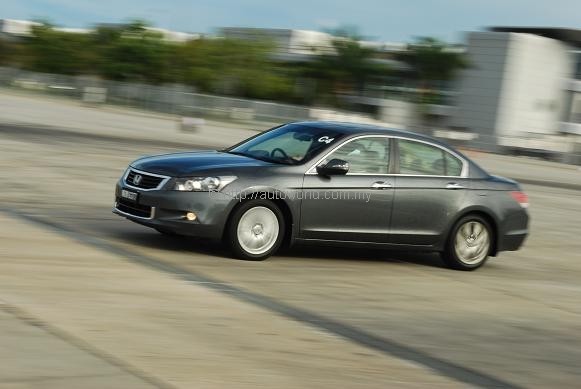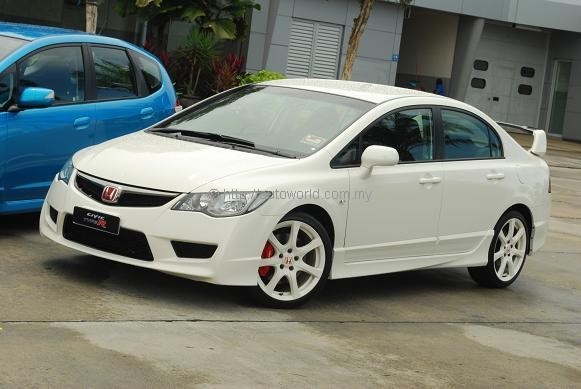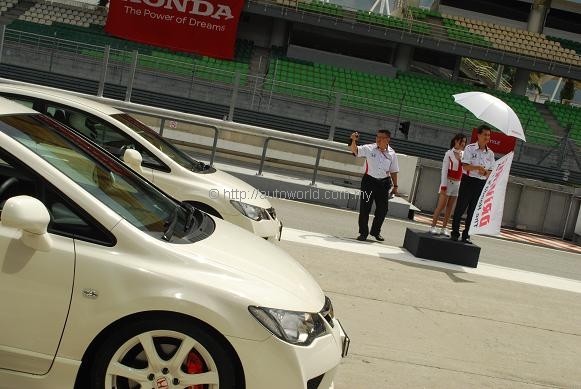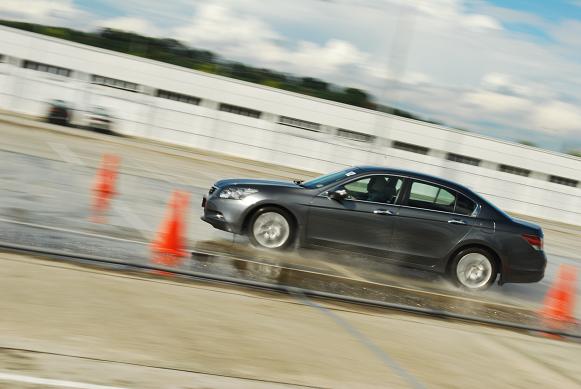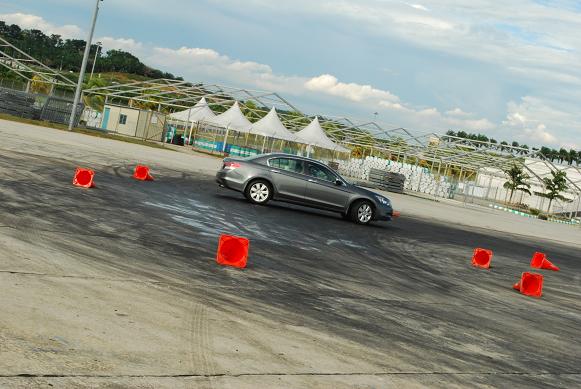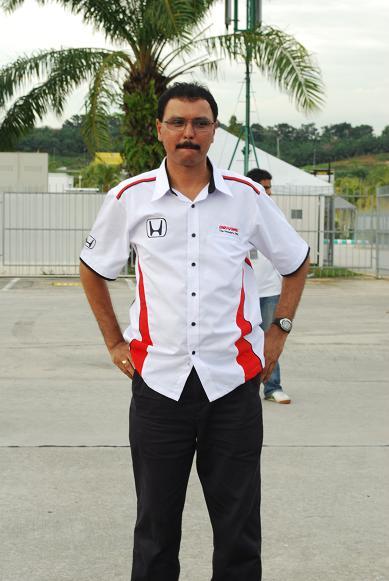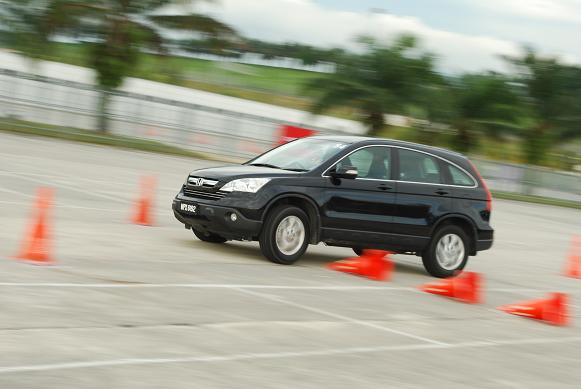A day on the track with Honda
In recent weeks, I’ve been encountering some funny behaviour from the people in Honda’s PR department. After volunteering the Civic 2.0S for me to test drive without even having to request, they suddenly pulled the plug on not one, but two test drive requests.
First, my scheduled review of the Accord 2.0 VTi-L was delayed because the only test car of that model was needed for some ‘internal event’. Then, my request for the Civic Type R was turned down because ‘a test car was unavailable’. A weird answer, since I saw the Type R test car sitting in Honda’s docks when I returned the Civic 2.0S. No matter, life goes on.
Then it came. An invitation from Honda to another one of their media events. It was a lengthy email, but two names caught my nearly disinterested eyes – ‘Civic Type R’ and ‘Sepang’. Quickly checking that my schedule was clear on the printed date, I replied to confirm my attendance. Quite simply, I was looking forward to hammer the Type R around Sepang.
When the day finally came, I realized that Honda had included quite bit more than the Type R for us. It certainly explained what happened to my two test drives. Honda Malaysia brought along their whole jingbang of models, pooling cars from their corporate and test fleets to bring to us ‘Driving: The Honda’s DNA – An Experiential Test Drive’.
The idea was to present to us the entire Honda model range to us, save the Civic Hybrid, and allow us to explore the dynamic limits of these vehicles in ways not possible to do in open roads. There were a total of four ‘stations’ each with different cars and different ‘tests’ for the journalists to push both the cars and themselves to the very limits. In order to minimize waiting time, journalists were divided into four groups, and were rotated amongst the four stations – track, slalom, wet course, and skid control.
On Track
You must have heard of it a hundred times over from various motivational gurus – this thing called the Law of Attraction. The premise is that your mind has the capacity of ‘attracting’ to yourself things that you concentrate hard enough on.
I have been practicing this law with mixed results. It has yet to land that dream date with Megan Fox, but after days of having the words ‘Civic Type R’ and ‘Sepang’ floating about my consciousness, I eventually found myself on the brink of taking this remarkable machine around the famed track.
Well, half of it anyway. For the track exercise, Honda lined up a dozen cars on the pitlane. There were two Civic Type Rs along with an assortment of other models. We were given three half-lap runs each time we got out to the track. Time constraints meant that not everyone got to drove every car, and a drawing of lots was required to see who drove what. I pulled out the City, Civic Type R and Accord 3.5.
My first run on the track was on the Honda City Grade E, which meant that I had paddle shifts at my disposal – useful for the corners. Because I have zero track experience, it was thus a good idea that I went out on the City first to familiarize myself with the track.
Being my first ever time driving on a race track, I decided that the best idea was not to go gung-ho in maximum mode. Taking racing lines with an aerial view of the map is kacang putih, but not so when you’re out there in the driver’s seat. While it’s easy to be good in Gran Turismo and Need For Speed, being there yourself means that the laws of physics have now become real. So, too are consequences of your actions. (ed: More driver training for you!)
For the purpose of warming myself up for the track, the City was perfect. Its featherweight body made it a joy to chuck around the track. Having paddle shifters helped along the corners. I pushed it to the brink of understeer, but kept just enough from having to be towed out of the ditch.
The one I was looking forward to was of course the Civic Type R. The car I found myself in was almost two years old, and has clocked a sizable number of miles in the hands of many no doubt very excited journalists, as illustrated by the loosened trim surrounding the gear lever.
Fortunately, there was nothing loose about the gear change itself. The six-speed manual transmission slots into position with legendary Type R precision and confidence. The clutch pedal was light, though it did not lack in bite. Shifting gears in a Type R is an experience that is tantamount to motoring orgasm.
On the straights, the engine up front revs with such smoothness and lust that before you know it, the tacho was already bouncing off the limiter. Upshift a cog, dump the clutch and feel the car thrust you through that same delightful routine again.
Cornering in the Type R is an exercise that is executed with utmost confidence. Its reserves of grip are mountainous. See a corner, point the steering in that direction, gun the throttle, and marvel at its precision.
So, when I migrated from the Type R to the Accord 3.5, it is sufficient to say that I did not fully enjoy that part of the exercise. Because this Accord has a big V6 up front, it is inherently nose heavy. As a result, the car’s electronics had to work over time to reign in the car’s heavy understeer during hard cornering.
It doesn’t help that this car is actually quite fast on the straights, which meant extra effort was needed to slow the car down in sharp corners. It was impossible to take the first and second corner combo of the SIC without calling in the VSA’s assistance.
After completing my runs in the three cars I drew, I was able to squeeze time for extra laps on the track with the Civic 2.0S. While the Type R was no doubt very good, my limited skill sets on the track meant that I was never close to exploiting its full breadth of talents.
The milder Civic 2.0 was a far more accessible machine to me. The same level of handling balance and cornering precision which I came to know when road testing this car were all there when I took it out for my three laps. Of course, the fact that I was already most familiar with the track at this stage probably improved things, but I was not able to explore this issue further because our group was scheduled to move on to the next exercise.
Slalom
The next exercise assigned to our group was the slalom course, which we were asked to perform in the tallest and bulkiest vehicle of their range – the CR-V. When I road-tested the CR-V recently, I was distinctly unimpressed. The exact words I used in my verdict were, ‘Competent SUV, but nothing outstanding’.
However, one thing that Honda got very right for the CR-V was the tuning of its road manners. Its use of independent double wishbone rear suspension ensures that the CR-V held a considerable edge over its rivals in terms of road dynamics.
The CR-V was immensely well behaved through the tight slalom course, as I chucked it about. With the gear lever resting on ‘2’, cornering and lane changing in tight spaces were handled with great composure. Regardless of its height factor, the CR-V handles very competently.
Despite its impressive showing here, my original opinion of the CR-V, as a family runabout vehicle on the whole, remains unchanged. Of course, if ride & handling tops your list of priorities when shopping for an SUV, you know where to look.
Wet Track
After putting the CR-V through its paces, our group moved on to the Wet Track, where an Accord 2.4 and Stream RSZ waited for us. The objective of this track was to put Honda’s Vehicle Stability Assist (VSA) system to the test.
The setup of this test was that we were to accelerate on a straight line through a gate of cones, after which a slippery surface, sprayed with water and covered with an ultra-slippery sheet of plastic on the left side awaited, on which we were to slam the brakes with all our might, and then steer the car around an obstacle.
Of course, in a non-VSA equipped vehicle, slamming the brakes in such a situation is tantamount to suicide, especially with one side of the vehicle having almost zero-grip. The unbalanced amount of traction available to both left and right sides of the car would then send it to a spin, making it impossible to control.
Having been through a some hairy situations on the road, my natural tendency is no longer to use full braking force when the roads are slippery. For the purpose of this test, I had to momentarily kick the habit, as mild braking would not have triggered the VSA system into action.
Skid Control
Skid control has always been a personal favourite of mine. Here, the instructors set up what is known as the ‘Half Circle’ test. We would go into the slippery half-circle, take a turn, the instructor riding shot gun would pull our hand-brake and then watch us catch the slide on the counter-steer.
To the uninitiated, proper execution of this move requires the driver to do the counter-intuitive, which is NOT to brake, and instead use throttle modulation to control the car, applying the right amount of traction to power the car out of trouble. It is one of those exercises that are frustrating if you get it wrong, but deeply satisfying if you get it right.
I went first in the Jazz, then later the Accord 2.0. With the Jazz, it was pretty much an exercise of easing it back under control after the rear wheels lock. The Accord, with its larger tail, threw its backside around much more readily, and required a firmer hand to handle. Also, unlike the Jazz which eased back on course, the Accord snapped itself back in control, straightening itself all of a sudden when you countersteer.
The Finale
After all four groups completed the series of exercises, the writers sat back and watched as Malaysian rally ace Karamjit Singh performed demonstration drives in the CR-V, City, Civic, and Jazz. Those who raised their hands quick enough even got to ride shotgun as the ‘Flying Singh’ threw the cars about with relentless abandon.
At the end of the day, it was an event of great fun, for we got to explore the limits of ourselves and the cars within a safe and confined environment. With only the hardy cones in any danger, we had the chance to attempt stunts with the cars which we usually have to forgo in the interest of safety. All in a good day’s work.




